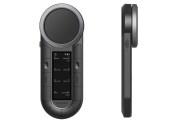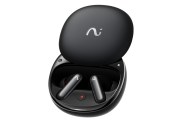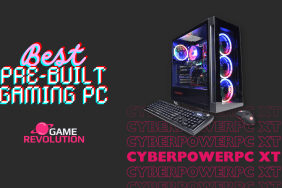A short-term memory.
It used to be that adventure gaming was a matter of walking around colorful environments, solving problems and working through a wacky puzzle here or there on your way to rescue the princess. Then MYST collected on our PCs and changed everything with its slow, steady tour through alien lands.
Trace Memory is an adventure in this vein, minus the difficulty, length and weirdness. You wander around a seemingly deserted island as a little girl named Ashley Robbins, looking for clues and solving puzzles through unmoving images of your surroundings, while a little ghost-boy friend of yours, named D, slowly narrates the story of his life.
 At first, there seems to be no connection between D’s story and your past. As far as you can remember, your parents were murdered when you were very young. Your aunt took you in and life was normal until you received a DTS (a Nintendo DS) in the mail with a message in it from your father, who asked you to meet him on "Blood Edwards Island." Yes, the translation is that bad.
At first, there seems to be no connection between D’s story and your past. As far as you can remember, your parents were murdered when you were very young. Your aunt took you in and life was normal until you received a DTS (a Nintendo DS) in the mail with a message in it from your father, who asked you to meet him on "Blood Edwards Island." Yes, the translation is that bad.
Upon arriving at Blood Edwards, your aunt disappears with a shriek. You search for her, but happen upon D, the boy ghost, instead. He claims his lack of memory is dooming him to a purgatory-like state on the island, then asks to join you in the hope that his memories will return as you both explore the huge mansion nearby. Think Casper the Friendly Ghost meets Ico and you’ve got the picture.
As the stories of your parents’ disappearance and of D’s death spill out, you’ll begin to see connections long before they’re brought to the surface. The plot is predictable and sedate, a mystery without much MYST.
You wander the island and mansion from a top-down perspective while a still image of your surroundings is shown on the top screen. Every once in a while, a magnifying glass in the corner of the bottom screen will illuminate. When touched with your stylus, it will bring the image from the top screen to the touch screen for you to examine. Tapping on objects in the picture will either illicit a short description from Ashley or give you an even closer view of the object in question.
 For example, if the object is a crank or lever, you’ll be able to move it with your stylus after a short prompt. Trace Memory makes good use of the DS’ many unusual capabilities. You’ll be required to open and close your DS to discover secrets, blow out candles through your microphone, and overlay pictures for clues in the top screen.
For example, if the object is a crank or lever, you’ll be able to move it with your stylus after a short prompt. Trace Memory makes good use of the DS’ many unusual capabilities. You’ll be required to open and close your DS to discover secrets, blow out candles through your microphone, and overlay pictures for clues in the top screen.
While most of the puzzles can simply be reduced to finding key X to unlock door X, the touch-screen functionality makes things a bit more interesting. At one point you’ll need to use the touch-screen to combine two keys into one, and then physically stick that key into the keyhole. You’re still just unlocking a door, but at least there’s more to it than simply pressing the ‘A’ button. Unfortunately, since Trace Memory is intended for children, most of the puzzles and problems are spelled out for you, sapping them of any difficulty.
The bulk of the puzzles are standard fare for an adventure game. You have your piano keys with symbols on them, slide puzzles, anagrams and several others that have been used in everything from Resident Evil to Harry Potter.
While these are usually easy, Trace Memory can still become extremely frustrating. You’ll regularly need to backtrack to solve puzzles, which in turn opens up the entire mansion to reasonable doubt when you think you’ve missed something. When stuck, you have no choice but to run all over the place, clicking everything you come across and using every item in your inventory until you inevitably stumble upon the missing detail.
 Such excursions to find missing links add significant length to an otherwise short game. Trace Memory, if you don’t get too stuck too often, takes only about a half-dozen hours to complete. While you can save the game after the first run-through – provided you remember to blow out the candles – the game is barely different the second time through and the plot points are all still the same (read: boring).
Such excursions to find missing links add significant length to an otherwise short game. Trace Memory, if you don’t get too stuck too often, takes only about a half-dozen hours to complete. While you can save the game after the first run-through – provided you remember to blow out the candles – the game is barely different the second time through and the plot points are all still the same (read: boring).
Where MYST dropped the player in an alien landscape, Trace Memory puts them in a glorified house. Instead of gazing upon abstract objects and crystal formations, expect to look at a lot of desks and bookshelves. Still, Trace Memory‘s presentation is clean and isn’t marred by any noticeable graphical flaws.
That task is left to the audio. The goofy soundtrack would have been better suited as a holding tune at a flower shop, while the primary sound effect is your grainy, annoying footsteps. There’s really no reason to ever have the volume up for Trace Memory, especially since there’s no voice-over.
Trace Memory is basically MYST for kids, offering a short trip through puzzle-ville with occasional stops at the lame story station. While we don’t recommend paying the full price for this ride, it’s a decent trip, if not a memorable one.
-
Good use of the DS capabilities
-
Some entertaining puzzles
-
Dull story
-
Short
-
Occasionally frustrating











